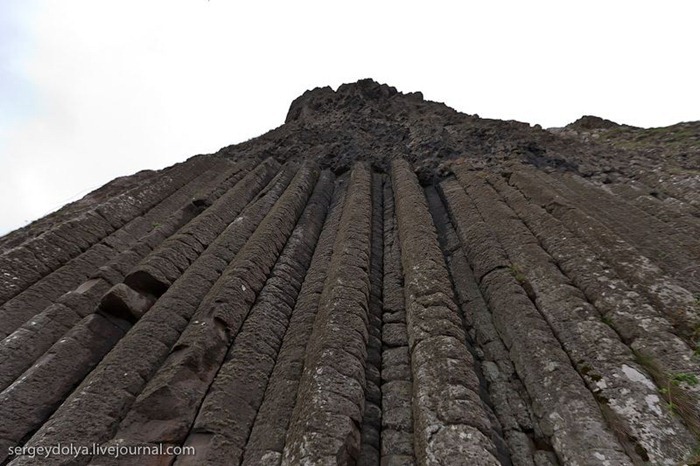
The remarkable geological features of the region have earned it the title of the Eight Wonder of the World and established it as a major part of Ireland's heritage. For 300 years the Causeway and the cliffs of the Causeway Coast have attracted thousands of visitors from around the world. Travellers have marveled at the beauty of the formations while scientists have sought to describe and explain them.
The causeway was formed during the early Paleogene period some 50 to 60 million years ago over a long period of intense volcanic activity. Highly fluid molten basalt intruded through chalk beds to form an extensive lava plateau. As the lava cooled rapidly, contraction occurred. While contraction in the vertical direction reduced the flow thickness (without fracturing), horizontal contraction could only be accommodated by cracking throughout the flow. The extensive fracture network produced the distinctive columns seen today. The basalts were originally part of a great volcanic plateau called the Thulean Plateau which formed during the Paleogene period.
Giant's Causeway was declared a World Heritage Site by UNESCO in 1986, and a National Nature Reserve in 1987 by the Department of the Environment for Northern Ireland.













No comments:
Post a Comment